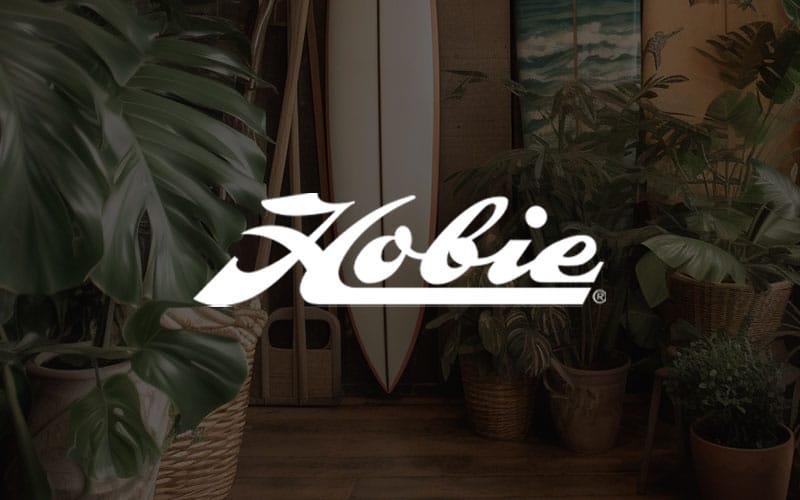As a young boy at a State Home in California, Larry Stevenson had no idea the visit from Leo Carrillo in 1939 would have such an impact on his life. Carrillo was a well-known actor who played Zorro’s sidekick in the movies.
Obviously, the boys at the home would be impressed with this fact alone. But what struck Larry that particular day was what he saw coming out of Carrillo’s green Chrysler Convertible. It was a scooter with a handle attached to it. Carrillo would give these scooters out to children at orphanages and state homes during Christmas time. Twenty-four years later, Stevenson would be inspired by these scooters that Carrillo had delivered to the children.
In 1961 Stevenson was busy publishing Surf Guide. At the time, the California surf scene was exploding and the guide covered the sport in great detail. He promoted the surf films of Bud Brown and had on staff a writer by the name of Bill Cleary.

As Stevenson says, “I realized that with the Surf Guide I had a unique capability to promote something.” That something was a scooter minus the handle: the skateboard.
It was Stevenson who had the insight that skateboarding could be a part of surf culture. Surf Guide laid the foundation for the roots of surfing to mesh with skateboarding. Cleary began to write articles on skateboarding and this in turn got surfers interested. Surfers were the first to embrace skateboarding and realize its potential.
In 1963, Larry Stevenson created Makaha Skateboards. The name came from the Makaha Surfing Championships. Production started up in June 1963 in Santa Monica. Shaped like surfboards, the Makaha Standard was 29 inches in length and the Malibu was a pretty tight 18 inches. The fact that the boards were shaped like surfboards further strengthened the tie-in with surfing. Wholesale cost was $7.77 and retail was $12.95.

Larry Stevenson experimented with a variety of materials to make skateboarding better, including plywood and foam, and even nylon wheels. In the fall of 1963, Makaha sponsored the first skateboard contest, held at the Pier Avenue Junior High School in Hermosa, California. The contest focused mainly on tricks (i.e., nose and tail wheelies, handstands, and high jumps). Brad “Squeak” Blank took first place.
There were other areas in which Larry Stevenson was an innovator. For example, Makaha was the first company to sponsor a skateboard team. Riders like Squeak Blank, Danny Bearer, Woody Woodward, Terry Spencer, Steve Tanner, and John Freis would travel to various places and give exhibitions.
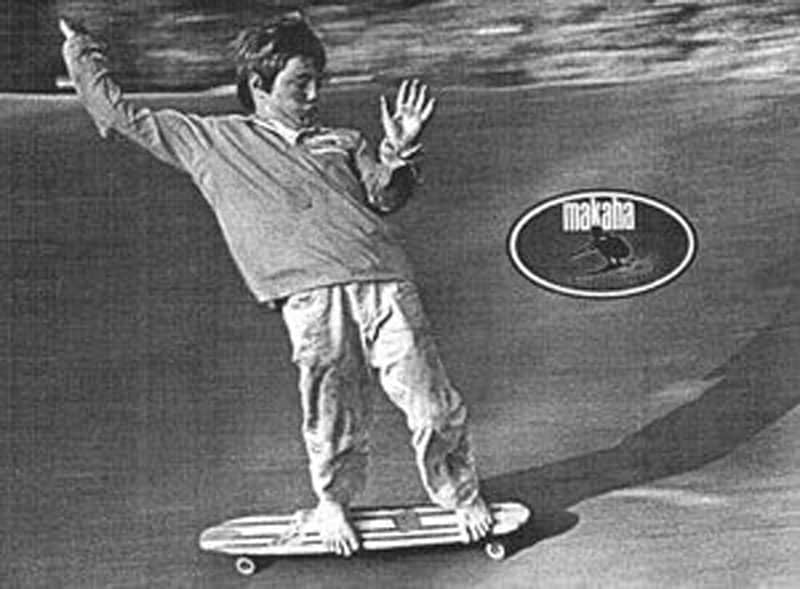
All of Larry’s hard work paid off: as the boom progressed, Makaha saw their orders grow to over 10,000 boards per day. From mid 1963 until the end of 1965, Makaha sold $4,000,000 worth of boards.
But despite skateboarding’s incredible rise in popularity, there was an immense amount of trouble brewing. The boards, while fun to ride, could not really grip the road well. The clay wheels were too hard and were also fairly poor in design.
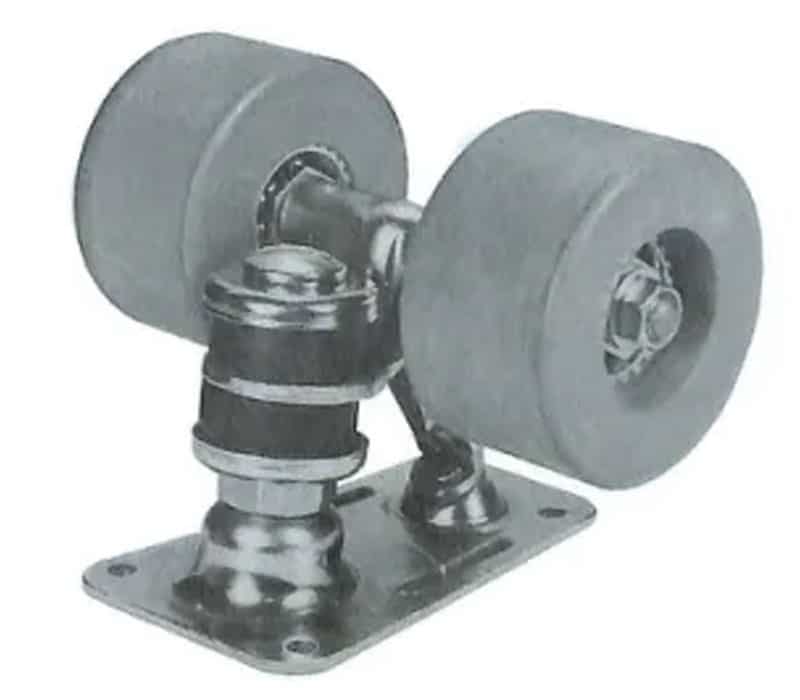
Skateboarders were dodging cars and pedestrians. There were numerous accidents and sometimes skaters wound up with broken bones. There were even reports of skaters being killed. The California Medical Association called skateboards “a new medical menace.” Worse still, police chiefs were telling stores not to carry skateboards in the interest of public safety.
As a result of these problems, cities and towns began banning skateboards. By August of 1965, 20 cities had banned skateboarding from sidewalks and street. The histeria continued into the fall of 1965. In some cities, skateboards were simply confiscated.
All of these problems led to the horrendous skatebust in the late fall of 1965. According to Larry, who was quoted in the Skateboarder’s Bible…
“I can just about recall the week, if not the day. It was mid November 1965, when things just died. One week I was getting so many orders, people were leaving them on my doorstep so I’d see them when I left for work in the morning. The next, I was getting 75,000 cancellations in a single day!
As a result of the skatebust, Makaha was left with considerable unsold inventory and enormous financial losses. Larry went back to lifeguarding, an occupation he had had prior to publishing the Surf Guide.
1966 was the official year that skateboarding died on a national level. However, there were several people in California (specifically the San Fernando Valley) who kept up with the sport. These included skaters like Torger Johnson, Ty Page, and Bruce Logan.
Then, in the late 1960s, Larry came up with something that again would have an enormous impact on the world of skateboarding: he invented the kicktail. “At first it was not accepted,” remarks Larry. In time and with a bit of radio advertising, skaters became interested. In 1969 he was awarded the patent for the kicktail.
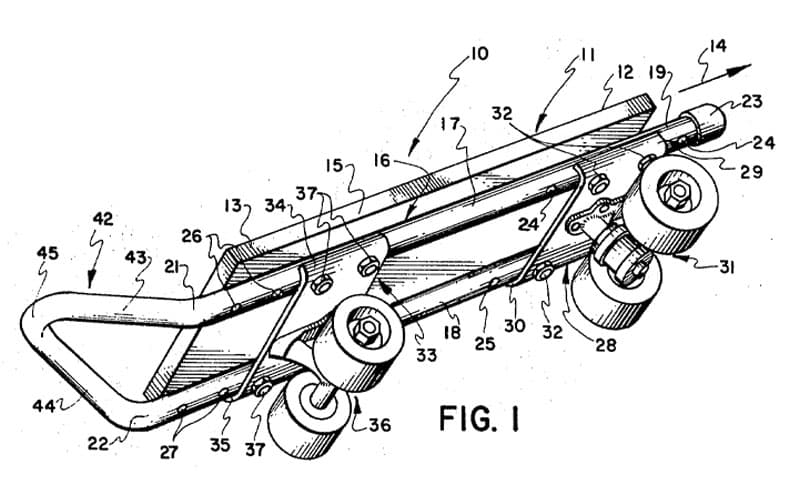
Other manufacturers soon copied the kicktail design and Larry asked them for a royalty. But the manufacturers didn’t want to honor the kicktail patent and pay a royalty to Larry. The exception was Gordon & Smith Skateboards, who did pay a royalty for the use of the kicktail. Larry began a three-year battle with the justice system to have other manufacturers honor his patent. In a landmark case, the judge didn’t agree with Larry, stating that “the kicktail was an obvious idea.” What this meant was that no manufacturers had to pay a royalty to Larry for his invention.
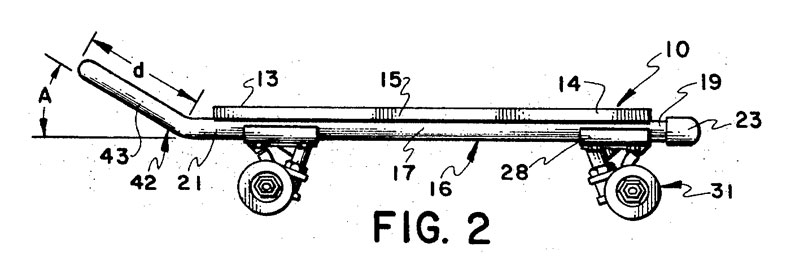
While dealing with the legal problems, Larry continued to promote the sport of skateboarding. In 1969 a new Makaha team was formed to try to revive the sport. Freestyle wizards Bruce and Brad Logan along with Ty Page and Rusty Johnson achieved some success with their exhibitions and fifty thousand Makaha skateboards were sold.
When skateboarding was fully revived in 1973, Makaha rode the second wave. Larry more than recouped his losses from the first skatebust. Over time he slowly moved back behind the scenes of the industry. In January of 1988, he joined up with Curtis Wong to publish Power Edge Magazine.

The skateboarding legacy Larry Stevenson has left is truly extraordinary.
Sadly, in 2012, Larry died at the age of 81 from complications due to Parkinsons.


